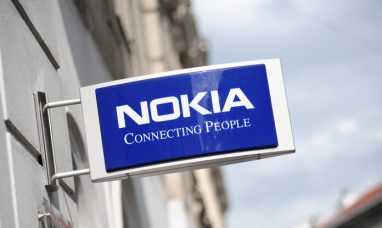Target Corporation (NYSE:TGT)
Target Corporation (NYSE:TGT) did not meet the expectations of market analysts for its outlook, but the stock rose since quarterly earnings and sales were above expectations.
In comparison to the average forecast of $2.15 that was compiled by FactSet, the retailer stated that its profits per share for the first quarter of the fiscal year will fall anywhere between $1.50 and $1.90. Target (NYSE:TGT) forecasts that it will earn between $7.75 and $8.75 per share for the current fiscal year, whilst market analysts anticipate that the company will earn $9.18 per share.
Rupesh Parikh, an analyst at Oppenheimer, said on Tuesday that the company’s forecast was better than feared, despite the fact that it was below the consensus estimate. This is especially true when taking into consideration the company’s impressive results for the fourth quarter.
Profit and revenue at Target for the fiscal fourth quarter came in far higher than analysts anticipated. It announced earnings of $1.89 per share for the fourth quarter, which was more than the average estimate of $1.40. The actual revenue of $31.4 billion was significantly more than the forecasted amount of $30.7 billion.
Same-store sales, which is a metric used in the industry to measure the sales of existing locations, increased by 0.7%, which was a better result than the forecasted decline of 1.6%.
On Tuesday, the share price was $169.90, reflecting a gain of 1.9% compared to the gain of 0.1% for the S&P 500 (INDEXSP:INX). With a gain of about 16 percentage points since the beginning of the year, Target stock has been one of the top-performing retail companies.
Following Walmart (NYSE:WMT) (WMTpublication)’s of uncertain prognosis for consumer spending last week, analysts mainly anticipated that Target would take a conservative stance in its upcoming earnings report.
At that same period, Walmart’s Chief Financial Officer John David Rainey participated in a teleconference with investors and stated, “We do not know what happens to consumer spending.” We do not know what will happen to layoffs or household income, and because it’s still early in the year and there are a lot of unknowns, we are simply taking a cautious stance at this time.
On Tuesday, members of Target’s management team expressed agreement with the statement.
Brian Cornell, the chief executive officer of Target, was quoted as saying in a news statement that the company is “planning our business cautiously in the short term to ensure that we stay flexible and adaptable to the present operating environment.”
Mark Astrachan, an analyst at Stifel, said that the uncertain economic climate was reflected in the fact that the business provided a guidance range that was wider than usual.
Yet, judging by the direction the stock has taken, investors appear to appreciate Target’s cautious approach. Corey Tarlowe, an analyst at Jefferies, is of the opinion that the conservative view will enable the corporation to establish a standard that is attainable heading into the following year.
Meanwhile, Wall Street was rallying in support of Target’s margin guidance. According to projections made by the corporation, the operating income margin of the business might approach the pre-pandemic rate of 6% as early as the fiscal year 2024. The operating margin for the fourth quarter was 3.7%, and it is predicted that the margins for the first quarter would be between 4% and 5%.
Since the retailer warned it had overstocked its inventories and was forced to heavily discount merchandise in an effort to get levels back to normal, Target’s margins have taken a significant hit over the past couple of quarters. This is because Target has been forced to discount merchandise heavily in order to bring levels back to normal. In point of fact, full-year gross margins were lower than expected, coming in at 23.6% rather than 28.3% as in 2021.
A change in the way that customers spend their money has also been detrimental to profit margins. As a result of the strain that inflation places on consumers’ financial resources, many consumers are choosing to spend their money on necessities rather than on non-essentials such as clothing and house furnishings. According to Cornell, this quarter was no different, with the company experiencing robust sales in food, beverage, and household basics categories, but a continuing downturn in sales of discretionary products. Executives have stated that they anticipate these shopping habits to continue over the course of the next couple of quarters, which may continue to put pressure on the bottom line of the company in the short term.
The management team at Target believes that there are a few opportunities for the company to improve as the year continues, despite the unpredictability surrounding consumer spending. Inventory levels at the conclusion of the quarter were 3% lower year-over-year, contributing to the company’s strong start to the new year. The management also anticipates that the profit will increase by hundreds of millions of dollars as the year advances due to a decrease in the costs of both the supply chain and freight.
In a call with investors, CFO Michael Fiddelke stated that the company’s projections for this year do not accurately reflect how they anticipate the long-term performance of their firm. “Once we see a normalization of consumer demand and a resumption of growth in discretionary categories, you’ll see that reflected in a stronger top-line performance and a meaningful increase in our operating margin rate beyond what we’re planning for this year,” said the CEO of the company. “You’ll see that reflected in a stronger top-line performance and a resumption of growth in discretionary categories.”
Featured Image: Unsplash @ maxwbender









